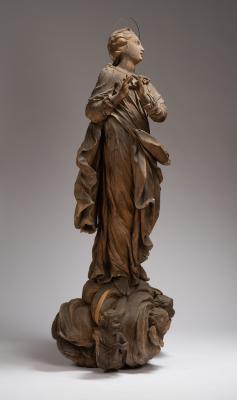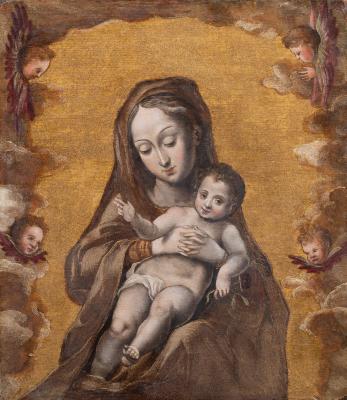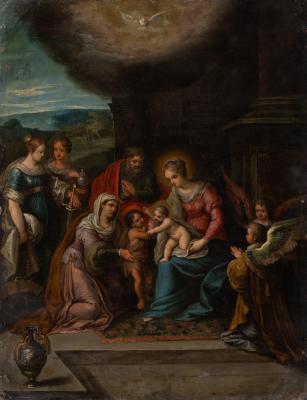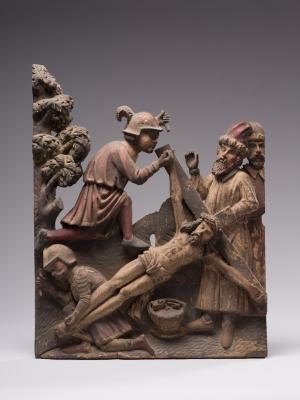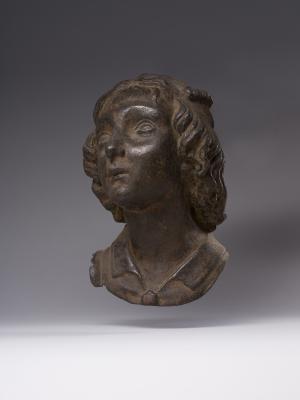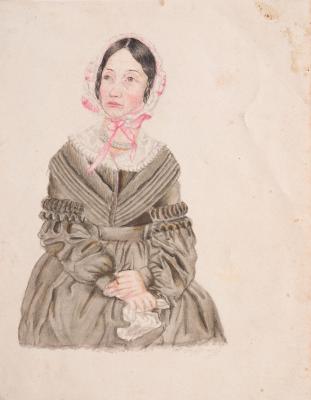In the seventeenth century, with the increasing role of the bourgeoisie in public life, the bourgeois portrait grew popular. Its main task was to reflect the image of a person. An example of such painting could be a portrait of an unknown man with a carnation. On a dark background in a symbolic oval, there is a waist-length figure of a 59-year-old man, as indicated by the inscription on the canvas. The face of the person is reproduced professionally and with confident strokes. To convey the social status of the man, the artist painted a coat of arms in the upper left corner of the work and an expensive white collar with lace. A man holds gloves and a carnation in his right hand. The tradition of depicting portraits with flowers was known in European art. The Polish researcher Mieczyslaw Gebarowicz wrote that the portrait as a painting by Dolabella was bought from Kazimierz Stadnicki for the Ossolineum collection in Lviv in 1854, but the authorship has not been proven.









